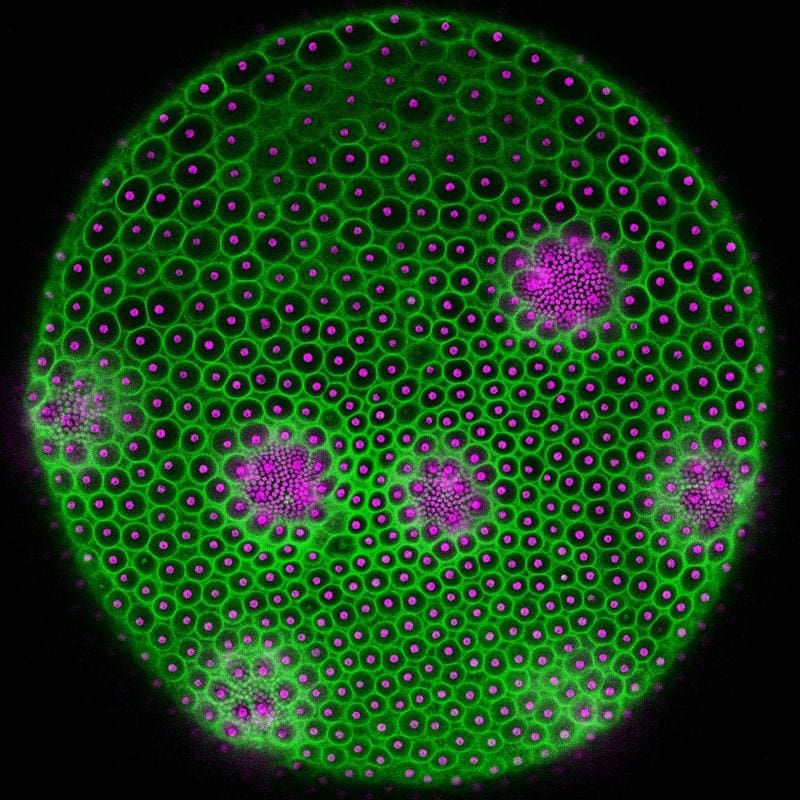Researchers from Bielefeld and Cambridge decipher geometry of cell assemblies
An international research team from the Universities of Bielefeld and Cambridge has gained new insights into the self-organization of cells in a study published in the journal “Proceedings of the National Academy of Sciences” (PNAS). The researchers investigated how cells form an ordered extracellular matrix (ECM), which is crucial for the structure of organisms, despite varying protein production.

Led by Professor Dr. Armin Hallmann from Bielefeld University, the team used the green algae Volvox carteri, a spherical model organism with about 2000 cells. By genetically labeling the ECM protein pherophorin II with a fluorescent marker from a glowing jellyfish, the fine structure of the ECM in the living organism could be visualized. Using a confocal laser scanning microscope (CLSM), the ECM was analyzed in high resolution.
The results show that pherophorin II is localized at the interfaces of the ECM compartments of individual cells as well as at the surface of the organism. Despite strongly fluctuating protein production of the cells, the outer structure remains stable and spherical. The area of the ECM compartments follows a mathematical k-gamma distribution, indicating variable protein production. The study reveals that ECM is created through self-organization: no single cell controls the process, but many cells work together, similar to a puzzle that succeeds without direct coordination. The resulting structure resembles in its geometry a foam with rounded or polygonal boundaries that develop dynamically during growth.
These findings provide important clues for developmental biology, especially on the question of how cells form complex structures without direct coordination. The study illustrates the interplay of biological, physical and mathematical processes in self-organization.
The research was carried out in close cooperation between the Chair of Cell and Developmental Biology of Plants in Bielefeld and the Department of Applied Mathematics and Theoretical Physics in Cambridge. Dr. Benjamin von der Heyde, Dr. Eva Laura von der Heyde (Bielefeld) as well as Anand Srinivasan, Dr. Sumit Kumar Birwa, Dr. Steph H├Čhn and Prof. Raymond Goldstein (Cambridge) were involved. The study was funded by the Wellcome Trust and the John Templeton Foundation, among others.
The results could advance future research on tissue development and regeneration, for example in the skin, cartilage or brain, and underline the importance of interdisciplinary cooperation in biology.
Original Paper:
Editor: X-Press Journalistenb├╝ro GbR
Gender Notice. The personal designations used in this text always refer equally to female, male and diverse persons. Double/triple naming and gendered designations are used for better readability. ected.




